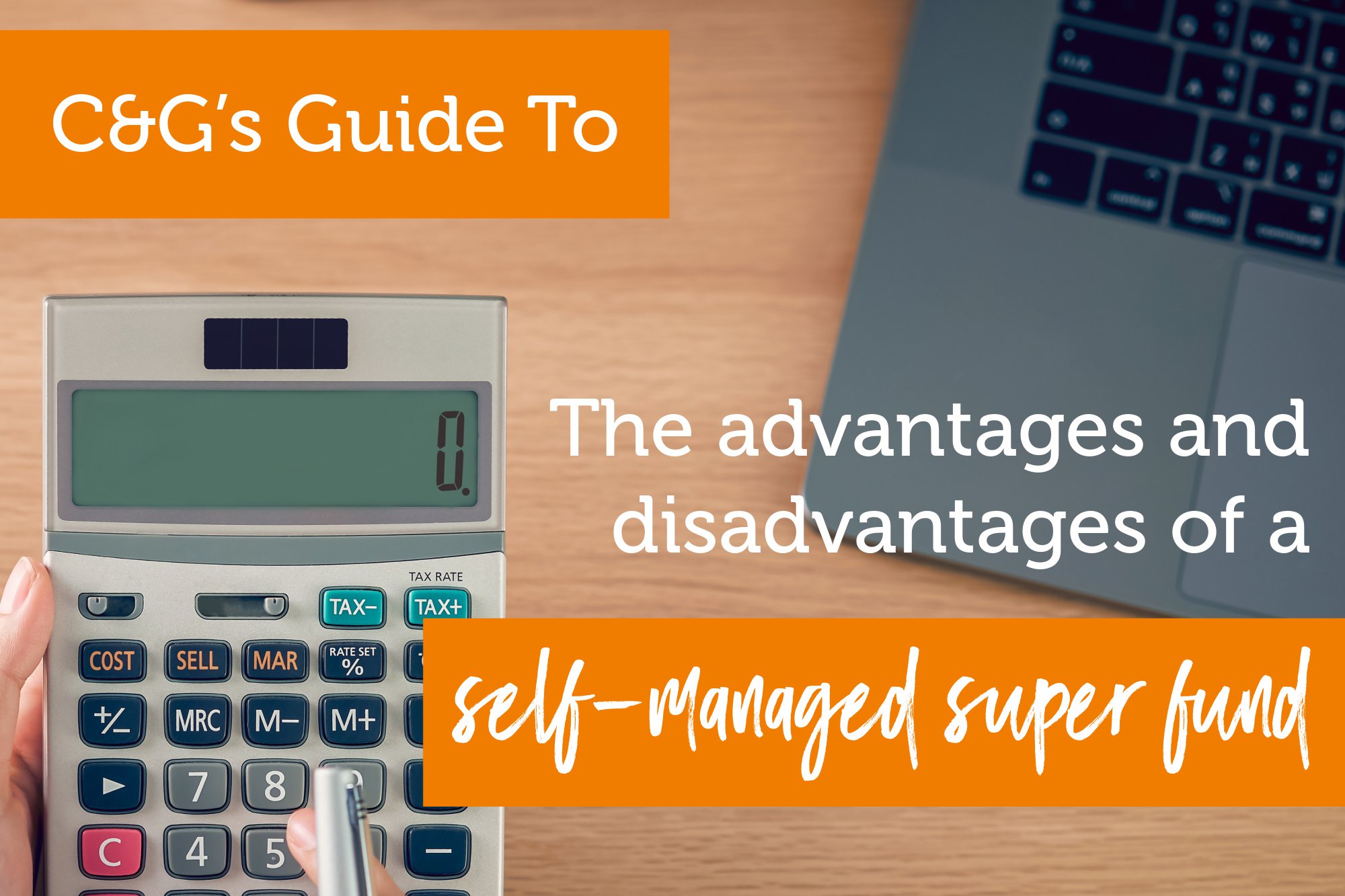The advantages and disadvantages of a self-managed super fund
Self-Managed Super funds (SMSF) are becoming increasingly popular, with statistics from the Australian Tax Office showing that around 1.1 million Australians now have an SMSF as of 2021. An SMSF is different to industry and retail super funds in the way that you are responsible for the management of your own super, seeing you choose the investments and the insurance. Ultimately, this gives you greater control over how your retirement savings are invested.
However, while more people are embracing the SMSF, it’s worth noting that there are a considerable number of rules and regulations that govern SMSFs, which in-turn places a lot of responsibility on anyone operating one and therefore may not be suitable for everyone. This way of managing your super is still regulated by the Australian Tax Office, and requires a significant amount of work to correctly set-up and maintain.
Despite this, there are several worthwhile benefits to an SMSF, and if you have the time and expertise to run a super fund yourself, it can be very rewarding and freeing.
In this C&G blog, we look at the advantages and disadvantages of a self-managed super fund, to help you decide if this is the right path for you when considering your retirement savings.
The Advantages of a Self-Managed Super Fund
Investment Choice
SMSFs offer a wider range of investment options compared to other superannuation funds. With some limited exceptions, a SMSF can invest in virtually anything providing that this also meets the sole purpose test and adheres to the regulations.
SMSFs are attractive to small business owners or the self-employed as a commercial property can be purchased by their SMSF. This property can then be rented to their business providing this is at the prevailing market rates.
Artwork and other collectables, physical gold and investments in some unlisted entities are all permitted within an SMSF. There are, however, stringent criteria that have to be met for these investments to ensure the SMSF remains compliant with the law.
You Have Total Control
The members of an SMSF have complete control over the fund. This means that they decide the investment path the fund will take. This can be crucial when deciding to take advantage of new opportunities that otherwise seem risky for ordinary super funds.
You can decide to invest in a wide range of assets including securities, managed funds, fixed interest investments, residential and commercial property, just to name a few.
Flexibility and Agility
Being in direct management of your own super fund gives you the opportunity to make quick adjustments regarding your investment portfolio, so you can quickly invest in profitable trends or, conversely, get out of losing trends.
Accountability
As a trustee and a member of your own managed super fund, you’ll have the benefit of greater insight into how your retirement funds are being invested and how they’re performing - because you’re doing it yourself!
You’ll be using tools that help you keep tabs on the value of your fund and provide you with access to up-to-date information, so you can see how your decisions are playing out essentially in real-time, making fund administration easier. Trusts are regularly utilised in family situations in protecting assets along with helping in tax planning.
The Disadvantages of a Self-Managed Super Fund
You Require Legal and Financial Knowledge
When you self-manage your retirement savings, there is a certain level of insights and expertise regarding investments, taxation and the legal responsibilities surrounding this.
Trustees are responsible for ensuring that their fund complies with the legislation and rules - a responsibility that should not be taken lightly. Be aware that if the ATO considers there has been a breach of your obligations and responsibilities, it can impose high penalties on trustees who will be personally liable. Serious breaches can result in an imposition of a tax rate of up to 47%.
It’s Time Consuming
SMSFs also demand a lot of time from their trustees to ensure investments are managed properly. You will be responsible for researching appropriate and profitable investment paths, assessing the market regularly and keeping tabs on your investment’s performance. There is also the additional time required to maintain the accounting records of your fund and make sure your fund remains compliant.
Residing in a Foreign Country
To self-manage your own super fund, members must be Australian citizens or permanent residents in order for the SMSF to be valid. If you plan to live permanently abroad or make donations to your fund while doing so, you may be in violation of the law if you continue to do so.
Fees Associated with Managing Your Money
While it’s easy to think that it would cost more to enlist a third-party to manage your super fund, the cost of running an SMSF can be disadvantageous if the assets held within that SMSF are low in value.
Conversely, costs to operate a SMSF do reduce proportionately when the value of the fund's assets are high. In this way, you’ll need to do the maths to determine whether an SMSF is worthwhile for you based on your particular circumstances. The general consensus is that you should have at least $250,000 of assets in your fund to make the costs of running a SMSF worthwhile.
If you would like more information, the Chisholm & Gamon team are more than happy to connect you with our recommended leading finance experts. Reach out to us today to learn more!
